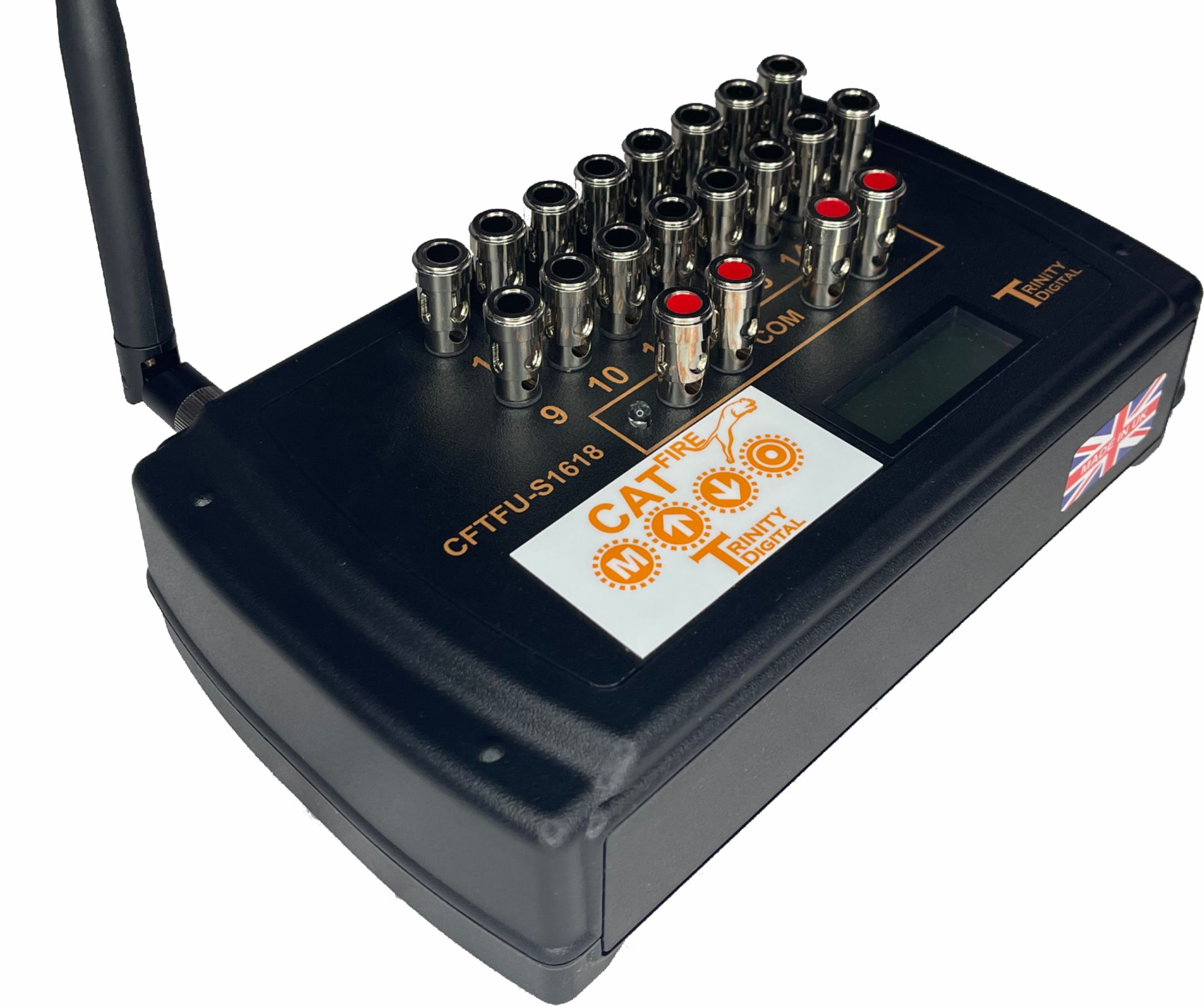Support: CFTFU-S1618
User manuals and helpful documents are listed here for you to download.
| Title | Version | Date available | Download link |
|---|---|---|---|
| User manual | 2 | 16th June 2025 | Download PDF |
| Understanding radio communication | 2 | 24th January 2022 | Download PDF |
- What is the radio range?
- 500 metres line of sight between a CFTFU-S1618 and the CFCIU-1 communications unit.
This means you can have a 1000m span from the CFCIU-1 communications unit. - Why does the unit have internal 9 volt PP3 type batteries? Why is it not a rechargeable unit?
- We took this decision because 9 volt batteries are more than good enough - this unit can fire an ematch on every single cue simultaneously - and that's after 18 hours of standby!
We also recognise that firing units may sit in your stores for long periods of non-use, but with 9 volt PP3 you can fit fresh energy when they are needed.
Rechargeables have problems with sitting around for long periods of non-use and their capacity dwindles with every charge.
Rechargeables can leave you in trouble if you arrive on site to find your units are not charged enough - charging can take some time, time you may not have.
But 9 volt batteries are available everywhere and low cost too, so sourcing some when you are desperate is not an issue. And they are readily recyclable.
Small rechargeable lithium battery packs like other units use don't really offer much more in terms of run hours, cold weather performance or even firing current.
But they do cost a lot more, require charging kit, maintenance and periodic replacement which again adds to long term cost. - Can I use rechargeable batteries in this unit?
- We do not recommend using rechargeable 9 volt PP3/6LR61 style batteries with this unit. We recommend using standard Alkalines especially Energizer batteries which have a high current capability and good Amp-Hour rating.
DO NOT use 9 volt Lithium-Ion or Lithium-Polymer batteries in this unit - these are not true 9 volt batteries, internally a simple 3.7 volt cell boosted to 9 volts. These batteries have a very low current delivery, the protection circuitry within them abruptly turning off the unit when it draws more current, typicaly only half an amp.
You can use NI-MH (Nickel Metal Hydride) but they are very expensive, will give you less than half the run time of Alkalines and will offer no more in terms of firing current delivery.If you want to try them we recommend you look at the Ansmann Max-E 9V PP3 HR22 300mAh battery. - Do I have to protect the unit?
- When flat on its base it will withstand rain to IP54. Limited ingress is permitted as per the design and so drying out will be needed if exposed for some time.
From fire/sparks: If you think the unit may get covered in sparks from nearby fireworks we recommend covering the unit with a simple plumbers soldering mat to shield the unit. Do not obstruct the antenna. The soldering mat should be a standard fibreglass based one. Ensure it contains no metal content. One that is at least 200mm x 300mm is a good size.
Generally using long leaded igniters means you can site the unit away from the fireworks and avoid the need to cover the unit. - What is the radio frequency?
- 863 MHz to 870 MHz (aka 868MHz) suitable for use in the United Kingdom and all of Europe. This band is arranged into 70 channels. CATFire hops between these continuously, avoiding noise.
- Why not 2.4GHz?
- 2.4GHz is heavily crowded by WiFi, Bluetooth and other radio users.
Further 2.4GHz does not penetrate obstacles as well as lower frequencies such as 868MHz.
There are also less channels within the 2.4GHz band, about 14, rather than the 70 available to CATFire. Further once a channel is selected hopping cannot occur - this can leave a 2.4GHz system vulnerable should other 2.4GHz users begin transmitting.
Regarding WiFi, bursts of high speed data are spread across multiple channels (so as to gain data bandwidth): obliterating any users of individual channels.
There are no firmware updates available right now, factory installed version is latest.
| Title | Changes | Version | Date available | Download link |
|---|
